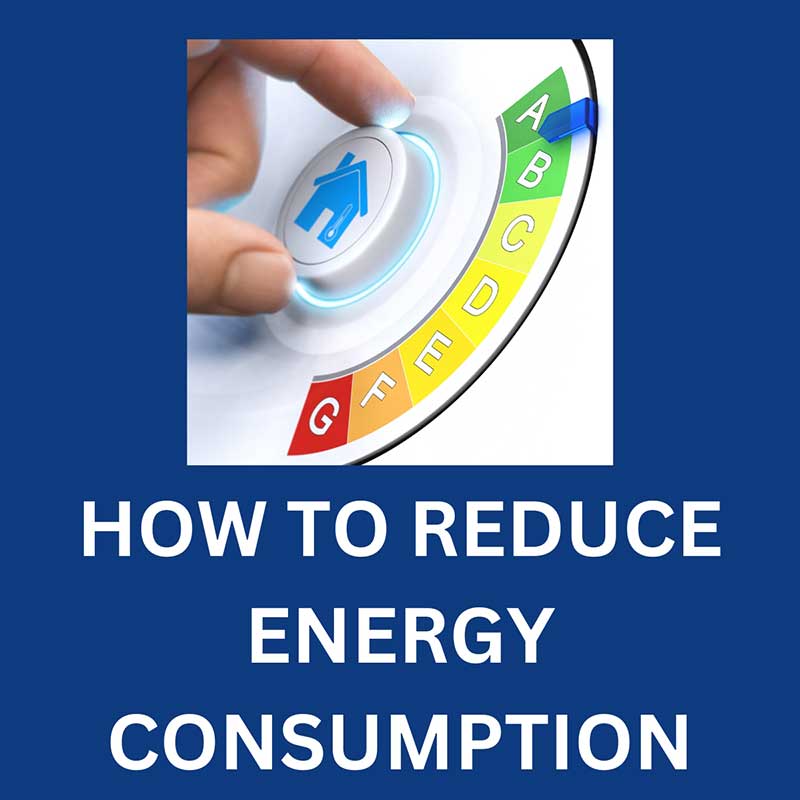
With rising energy prices, energy conservation has never been more important. UK households account for approximately 38% of the overall national energy usage. Everyone should play their part in reducing consumption.
This guide will walk you through various ways to improve your home’s energy efficiency, embrace a more sustainable lifestyle and save money.
The Home Energy Audit
Before attempting to reduce your home’s energy consumption, it’s essential to understand your current energy usage and identify areas for improvement.
Areas for improvement include
- Appliances & Devices
- Insulation
- Heating & Cooling Systems
- Water Heating
- Lighting
A home energy audit systematically assesses your home’s energy performance. There’s no need for a professional assessment. Instead, an energy audit is something you can do yourself.
Once you have identified areas for improvement, you can create a personalised energy-saving plan and undertake the necessary changes around your home.
Appliances and Devices
Replacing your old appliances with modern energy-efficient models could reduce your home’s energy consumption.
In the UK, the energy efficiency of appliances is rated using the European Energy Label.
This label provides essential information on various household appliances’ energy performance, consumption, and environmental impact, allowing consumers to make informed choices when purchasing new products.
The label was first introduced in 1994 and has undergone several changes to keep up with advances in technology and energy efficiency standards.
A new energy labelling system was implemented in March 2021 across the UK and the European Union.
The updated labelling system simplifies the energy efficiency ratings and encourages the development of new energy-efficient appliances.
Here are the key features of the new European Energy Label:
- Energy Efficiency Scale: The new energy label rates appliances from A to G. A is the most energy-efficient, and G is the least efficient. The previous rating system included A+, A++, and A+++ classes, which have been removed to make the scale more understandable for consumers.
- Rescaled Ratings: The new system has been designed to leave room at the top of the scale for future improvements in energy efficiency. Very few products will initially receive an A rating, and many products previously classified as A+++ may now fall into the B or C categories.
- QR Code: Each label now includes a QR code, which consumers can scan for more detailed information about the product’s energy performance and features.
- Updated Product Categories: The new European Energy Label has been introduced for several appliance categories, including fridges, freezers, washing machines, washer-dryers, dishwashers, TVs and Monitors.
- Additional Information: Besides energy efficiency ratings, the label provides other information (where relevant), such as water consumption, noise levels, and capacity.
Always read the energy label when purchasing new appliances to determine the product’s energy efficiency and performance.
Choosing appliances with higher energy efficiency ratings should reduce energy consumption and energy bills.
Although the initial cost of energy-efficient appliances might be higher, the long-term savings on energy bills make them a worthwhile investment.
Smart home technology can also help optimise energy usage. Smart thermostats, for example, learn your schedule and adjust the temperature accordingly, reducing energy waste.
Program Smart lighting systems to turn off when rooms are unoccupied, further lowering consumption.
Additionally, heating can be controlled remotely, which, when used properly, can aid in energy conservation.
Reducing energy usage with appliances is equally important. Unplug devices when not in use and use energy-saving settings on washing machines, dishwashers, and televisions.
Insulation
Improving insulation is a cost-effective way to reduce energy consumption for heating and cooling. Weather-stripping and sealing air leaks around windows and doors will minimise drafts while adding insulation to walls and lofts will keep your home warmer in winter.
Insulating materials commonly used in the UK include mineral wool, rigid foam boards, and spray foam insulation.
Heating And Cooling
Regularly servicing and cleaning your heating and cooling systems will also improve efficiency. Replace filters as recommended and schedule annual servicing to ensure the peak performance of your Boiler and Air Conditioning units.
Adjusting temperature settings can have a considerable impact on energy consumption.
Use programmable thermostats to create a schedule that reduces heating and cooling when you are away or asleep.
Water Heating
Water heating accounts for a large amount of home energy consumption.
Insulate your water cylinder (if you have one) and hot water pipes (if possible) to prevent heat loss.
You can also lower the temperature setting on your water heater to around 60°C (no lower) to save energy without compromising safety.
Lighting
Replacing old bulbs with energy-efficient LED bulbs will drastically reduce your home’s energy consumption.
LED bulbs use up to 90% less energy than traditional bulbs and last longer.
Make use of natural light to reduce reliance on energy-powered lighting.
Installing lighting controls will further optimise your energy usage. For example, motion sensors in hallways, bathrooms, and outdoor spaces ensure that lights are only on when needed.
Dimmer switches allow you to adjust the lighting brightness to your exact preferences and, at a lower intensity, will save money.
Remember to purchase and install dimmable LED bulbs if you plan to use dimmer switches.
Conclusion
By undertaking a home energy audit, upgrading your appliances, improving heating and cooling efficiency and optimising your lighting, you will create a more energy-efficient home, save money and lower your carbon footprint.

Hi, I’m Terry, the founder and owner of TM Hughes & Son Gas Services
Please get in touch to book an appointment or receive a free, no-obligation quote
Call – 01245 830075
Email – info@tmhughesandson.uk
0% Finance
For Boiler Installations & Repair
